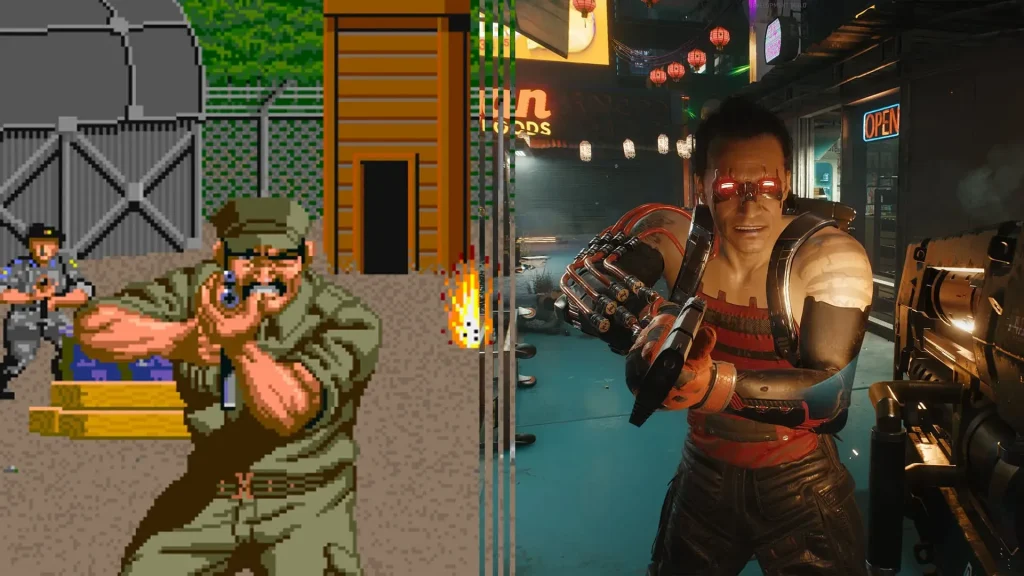Evolution of gaming graphics has mirrored hardware and software progress across decades, shaping how players perceive virtual worlds. From the blocky charm of pixel art to the cinematic detail of modern lighting technology, every leap in visuals tells a story about capability and imagination. Early sprites and simple textures taught players to read scenes quickly, while real-time rendering introduced dynamic lighting and movement in ways that invite exploration. As graphics engines evolved, artists learned to orchestrate shading, geometry, and post-processing into cohesive, expressive worlds. Today, the balance between aesthetic ambition and performance continues to drive innovations like ray tracing and scalable rendering pipelines.
From the perspective of semantic clustering, the topic can be reframed as the trajectory of visual fidelity, image synthesis, and cinematic lighting across game development. Modern discussions emphasize how rasterization, shading models, and global illumination converge in powerful graphics engines to produce convincing worlds. Alternative terms such as graphical realism, dynamic lighting, and real-time interactivity help readers connect with the core idea without redundancy. As hardware and software continue to advance, the boundary between retro aesthetics and photorealistic ambience widens, inviting new creative styles powered by advances in shading technology. These shifts continue to influence game design and player perception.
Evolution of gaming graphics: From pixel art to real-time rendering and ray tracing
Pixel art emerged from the limitations of early hardware, where every sprite had to be legible on tiny screens with a restricted color palette. The result was a distinctive charm built from crisp silhouettes, bold color choices, and concise animation. This practical aesthetic fostered a shared visual language among players, inviting quick recognition of characters and actions even when detail was scarce.
As hardware progressed, developers began to explore three-dimensional space, texture mapping, and shading, setting the stage for real-time rendering. This transition moved games from flat sprites to immersive worlds with depth and atmosphere. While early 3D could be blocky, it established the core idea: rendering scenes in real time demanded more sophisticated lighting technology and smarter rendering pipelines to deliver believable environments and narratives.
The tech stack behind modern visuals: graphics engines, lighting technology, and the rise of ray tracing
Graphics engines, together with programmable shaders, form the backbone of contemporary visuals. Engines like Unreal and Unity abstract complex rendering tasks, offering robust material systems, post-processing tools, and physically based rendering (PBR) that harmonize geometry, textures, and lighting. This real-time rendering foundation enables developers to craft expansive worlds and cinematic effects while managing performance across diverse platforms.
Ray tracing marks a major milestone by simulating the actual behavior of light to produce realistic reflections, shadows, and global illumination. Modern hardware—GPUs with dedicated RT cores and optimized acceleration structures—supports hybrid rendering that blends rasterization with ray-traced effects. The result is heightened realism that still accommodates artistic direction and stylistic choices, with lighting technology playing a central role in how materials, volumes, and scenes respond to light.
Frequently Asked Questions
How has the Evolution of gaming graphics progressed from pixel art to real-time rendering and ray tracing?
In the Evolution of gaming graphics, the journey starts with pixel art, where limited resolution shaped clear silhouettes and color choices. As hardware progressed, real-time rendering and texture mapping unlocked deeper depth, later standardized by graphics engines like Unreal and Unity. Today, lighting technology advances—pbr, shadows, ambient occlusion—and ray tracing in real time combine with rasterization to deliver convincing, immersive visuals.
What role do graphics engines and lighting technology play in shaping the current state of the Evolution of gaming graphics?
Graphics engines provide real-time rendering pipelines, material systems, and post-processing that drive the current state of the Evolution of gaming graphics. Lighting technology—global illumination, realistic shadows, reflections—adds depth and mood, while hybrid approaches that blend rasterization with ray tracing help maintain performance across platforms.
| Aspect | Key Points |
|---|---|
| Pixel Art Era | Limited resolution and color; distinctive charm; taught players to read silhouettes; foundational visuals. |
| Transition to 3D | Hardware progress enabled depth and texture; early 3D could be blocky; transition varied by platform. |
| Real-Time Rendering Emerges | Real-time shading and lighting on the fly; GPUs enable interactive worlds; shift from pre-rendered to dynamic scenes. |
| The Rise of Lighting Technology | Specular highlights, ambient occlusion, shadow mapping; lighting shapes material perception and atmosphere. |
| Shaders and Graphics Engines | Programmable shaders (vertex, pixel, compute); rise of engines like Unreal/Unity; streamlined rendering pipelines. |
| Ray Tracing | Ray-based lighting, reflections, shadows; hardware RT cores and acceleration structures; real-time realism with trade-offs. |
| Graphics Engines & Rendering Techniques | Physically Based Rendering (PBR), hybrid rasterization + ray tracing; realistic materials; cross-platform scalability. |
| Impact on Gameplay & Experience | Graphics influence design decisions, immersion, exploration; balance realism and style; stylized visuals persist. |
| Current Landscape & Future Prospects | Rasterization plus real-time ray tracing, upscaling tech, global illumination, AI-assisted rendering; ongoing breakthroughs. |
Summary
Evolution of gaming graphics is a narrative of constraint transforming into capability. It begins with the pixel art era and grows into a complex ecosystem where real-time rendering, advanced lighting technology, and ray tracing push the boundaries of what players see and feel. Graphics engines and rendering techniques provide the scaffolding for artistic expression, enabling developers to craft worlds that are visually compelling and emotionally resonant. As hardware, software, and creative vision continue to evolve, the line between stylized and photorealistic visuals will blur further, inviting designers to innovate without sacrificing performance or gameplay.

